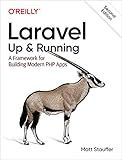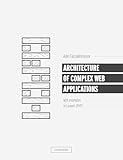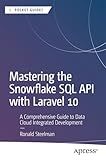Best Laravel Regex Tools to Buy in December 2025

Laravel: Up & Running: A Framework for Building Modern PHP Apps



Laravel 12 for Beginners & Beyond: A Complete Guide to Building Modern PHP Web Applications with Clean Architecture, Hands-On Projects, and Best Practices



Mastering Laravel 12 : Advanced Techniques for Modern PHP Development



Architecture of complex web applications. Second Edition.: With examples in Laravel(PHP)



Mastering the Snowflake SQL API with Laravel 10: A Comprehensive Guide to Data Cloud Integrated Development (Apress Pocket Guides)



Laravel 7.X : LEARN BASIC LESSONS & BUILD A CRUD APP (PHP Framework)



The Laravel Survival Guide: Written & Updated for Laravel 5.3



Laravel Essentials: Tips & Tricks for Developers: Master Laravel with Practical Tips for Every Developer


To use regex to route prefix in Laravel, you can define a route with a regular expression for the URI parameter. This allows you to match specific patterns in the URI and direct the request to the appropriate controller.
For example, you can define a route with a regex prefix like this:
Route::get('/{prefix}-{id}', 'PrefixController@index')->where([ 'prefix' => 'admin|user', // Define regex pattern for prefix 'id' => '[0-9]+' // Define regex pattern for id ]);
In this case, the route will match URIs with the pattern "/{prefix}-{id}" where the prefix can be either "admin" or "user" and the id is a numeric value.
By using regex in Laravel routes, you can create more flexible and dynamic routing patterns for your application. This can be useful for handling different types of requests and directing them to the appropriate controllers based on the URI structure.
How to define route name prefixes with regex in Laravel?
In Laravel, you can define route name prefixes using regular expressions (regex) by modifying the RouteServiceProvider class. You can use the pattern method to define a regex pattern that will match the route names you want to prefix.
Here's an example of how you can define route name prefixes with regex in Laravel:
// In the RouteServiceProvider class
public function boot() { Route::pattern('prefix', 'prefix1|prefix2|prefix3');
Route::group(\['namespace' => $this->namespace, 'prefix' => '{prefix}'\], function () {
require base\_path('routes/web.php');
});
}
In this example, we have defined a regex pattern prefix1|prefix2|prefix3 using the pattern method. This pattern will match any route name that starts with prefix1, prefix2, or prefix3.
Then, we have added a route group with a parameter {prefix} that will match the route names based on the regex pattern defined.
By following this approach, you can define route name prefixes with regex in Laravel and group routes based on the matching prefixes.
What is the syntax for regex in Laravel routing?
In Laravel, regex can be added to routes by enclosing the regex pattern inside curly braces {} after the route parameter name. Here is an example of using regex in Laravel routing:
Route::get('user/{id}', function ($id) { // })->where('id', '[0-9]+');
In the above example, the parameter {id} is constrained to match only digits by using the where method with a regex pattern [0-9]+.
You can add any valid regex pattern inside the curly braces {} to constrain the route parameter to match the specified pattern.
What is the significance of placeholders in Laravel routing with regex?
Placeholders in Laravel routing with regex allow developers to create more dynamic and flexible routes by matching certain patterns in the URL. This is especially useful when you need to match dynamic parts of the URL, such as an ID or a slug, without having to specify every possible combination of values.
For example, instead of creating separate routes for different user profiles like '/user/1', '/user/2', '/user/3', etc., you can use a placeholder with regex to match any numeric value like '/user/{id}'.
This can make your routes more concise, easier to maintain, and provide better flexibility for future changes. Using placeholders with regex in Laravel routing helps optimize the application's performance and provides a clean and user-friendly URL structure.
What is the importance of route caching when using regex in Laravel routing?
Route caching is important when using regex in Laravel routing because it helps to improve the performance of the application by reducing the time it takes to resolve routes. When routes are cached, Laravel does not need to scan the route files and compile the regex patterns for each request, which can be resource-intensive.
By caching routes, Laravel can quickly identify the appropriate route based on the URL pattern, avoiding the overhead of processing the regex patterns each time a request is made. This can result in faster response times and better overall performance for the application.
Additionally, caching routes can also help to enhance the security of the application by reducing the risk of route conflicts or errors that may occur when dynamically resolving routes based on regex patterns.
Overall, route caching is an important optimization technique when using regex in Laravel routing to ensure efficient and reliable performance of the application.
What tools can be used to test regex patterns in Laravel routing?
There are several tools that can be used to test regex patterns in Laravel routing:
- Online regex testers such as regex101, RegExr, or RegexPlanet.
- Laravel's built-in route:list command, which allows you to see all registered routes and their respective regex patterns.
- PHPUnit for writing and executing tests that validate the expected behavior of your regex patterns.
- Postman or Insomnia for making HTTP requests to your Laravel application and checking if the routing is working as expected.
- Laravel Dusk for writing browser tests that interact with your application and test the routing logic.
How to handle route conflicts when using regex prefixes in Laravel?
When using regex prefixes in Laravel routes, it is important to handle route conflicts carefully to avoid unexpected behavior. Here are some tips on how to handle route conflicts effectively:
- Use specific regex patterns: Make sure that the regex pattern used in each route is specific enough to accurately match the intended URLs. Avoid using generic patterns that may unintentionally match other routes.
- Order routes carefully: When defining routes with regex prefixes, ensure that they are ordered properly in your routes file. Routes are matched in the order they are defined, so make sure that more specific routes come before more general ones to avoid conflicts.
- Use route constraints: Laravel allows you to define route constraints that further narrow down the matching criteria for a route. You can use constraints like where() method to specify additional conditions that must be met for a route to match.
- Use named routes: Give each route a unique name to easily reference them in your code. This will not only help prevent conflicts but also make your code more readable and maintainable.
- Test your routes: Always test your routes to ensure that they are behaving as expected. Use tools like Laravel's route:list command to see a list of all registered routes and check for any conflicts or unexpected behavior.
By following these tips and being cautious when using regex prefixes in Laravel routes, you can effectively handle route conflicts and ensure that your application runs smoothly.
